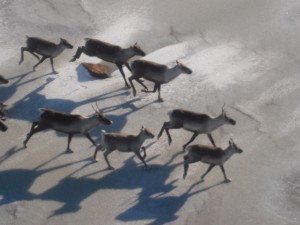

 In order to implement the Green Energy Act, Ontario has recently adopted O. Reg. 359/09, to set up a new regime for accelerated approvals of renewable energy projects (wind, solar, anaerobic digestion and biomass combustion). One key element of the new regime is a six month “service guarantee”. This means that the Approvals Branch has promised to make decisions on renewable energy projects within six months after a complete application is filed.
In order to implement the Green Energy Act, Ontario has recently adopted O. Reg. 359/09, to set up a new regime for accelerated approvals of renewable energy projects (wind, solar, anaerobic digestion and biomass combustion). One key element of the new regime is a six month “service guarantee”. This means that the Approvals Branch has promised to make decisions on renewable energy projects within six months after a complete application is filed.
Aboriginal consultation may not fit well with this concept; it is certainly the area least under the control of either the applicant or the Ministry of the Environment. The regulation therefore attempts to achieve several conflicting goals: to keep aboriginal consultation both constitutional and manageable for proponents, while keeping it from eating into the ministry’s six-month processing time.
Applicants must perform aboriginal consultation well before they submit an application to the Ministry. Under section 14, the Director provides each applicant with a list of aboriginal communities to be consulted, defined as those who “have or may have constitutionally protected aboriginal treaty rights that may be adversely impacted by the project”. The Director will also include on the list any other aboriginal community that “otherwise may be interested in any negative environmental effects of the project”.
This could be a long list, but the applicant might at least take comfort from having a defined list of communities with whom they are obliged to consult. This hope is dashed by section 15, which puts an independent, equivalent obligation upon the applicant to identify aboriginal stakeholders. It is further dashed by section 17(4), which allows the Director to require additional aboriginal consultation at any stage of the process.
Assuming that the applicant has been able to successfully identify the relevant aboriginal communities, the applicant must provide certain drafts and other documents to the aboriginal communities before they provide a draft of their application to the public. The applicant is required to “communicate” with each aboriginal community concerning its “constitutionally protected aboriginal or treaty rights”, and the measures that each community thinks should be taken to protect those rights. “Constitutionally protected aboriginal or treaty rights” are not defined. In particular, it is unclear whether they include unresolved and possibly overlapping land and other claims. We can also anticipate constitutional challenges to any approvals that are issued without what each aboriginal community considers to be full and adequate consultation and accommodation. There could also be vires challenges, based on s.1(2) of the Act, which requires the Act to be interpreted “in a manner that is consistent with section 35 of the Constitution Act, 1982, and with the duty to consult aboriginal peoples.”
Section 17(2) 4 optimistically requires the applicant to make a written request of each aboriginal community, asking them to provide their comments and concerns in writing. There is no indication of how long an applicant must wait for this document, and what they should do if it is not forthcoming.
In contrast to aboriginal consultation, the necessary consultation with members of the public and with municipalities is relatively straightforward, and should be within the Ministry’s legal control.